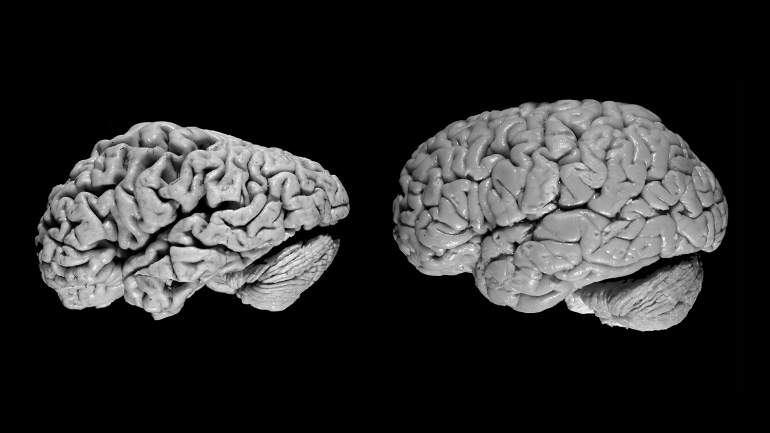Artificial intelligence has learned to find Alzheimer's disease in the brain for 6 years before being diagnosed

PET scan of the human brain with severe Alzheimer's disease
Using images of conventional brain scans, the researchers were able to teach the algorithm to determine the early stage of Alzheimer's disease — 6 years before the same conclusion was given by a traditional medical diagnosis in the clinic. This may allow another blow to one of the worst diseases (the third main cause of death in developed countries after heart problems and cancer).
So far, there is no medicine to restore the cognitive abilities of patients with dementia, except to alleviate the symptoms. But literally in recent months, potential ways to combat the development of the disease have begun to emerge.Recently, Habré had an article by Dale Bredesen, which helped 100 patients. And Anavex has developed the drug A2-73 , stopping the development of Alzheimer's in 30% of patients.
But all this does not work in the final stages of the progression of the disease. For the successful application of any techniques need the brain, which still has something to run. We have not yet learned how to find Alzheimer's disease before its effects have already begun to negatively affect a patient’s life.
AI should help us with this. Watch out for a terrible disease so that people can do something with it. The new system was developed by scientists at the University of California San Francisco under the leadership of Dr. Jae Ho Son . They taught artificial intelligence to analyze tomography snapshots in order to find some kind of information, driven by him alone, that predict the appearance of Alzheimer's disease in the future. Their work (more than 20 authors!) Can be read in the journal Radiology , it became the most popular for the entire 2018 year.
Jae Ho Son explains his project idea:
One of the main problems with Alzheimer's disease is that by the time you started experiencing clinical symptoms, too many neurons in the brain have already died, and, in fact, the process is irreversible. We must begin to do something before that.
In the new work, Son and his team combined the possibilities of neuroimaging with machine learning, and 2109 images of 1002 patients from 2005 to 2017 were fed to the machine. The AI test was conducted separately - on 40 PET scan images of 40 patients. As a result, the car was able to identify 98% of cases of the disease - on average, 76 months before its actual diagnosis.

The brain of a person with the fourth stage of Alzheimer's disease (left), the human brain without a disease (right)
Positional emission tomography (PET) measures the levels of certain molecules, like glucose, in the brain, and is widely used in clinical oncology. Glucose is the main source of energy for brain cells, and the more active they are, the more glucose they consume. As human mental activity is impaired, the cells slow down their activity and die off, consuming less and less glucose.
Scientists have long tried to use such a tomography for the early detection of Alzheimer's disease. The problem is that the brain of all people is different, and what is a normal glucose content for one will mean a progressive disease in another. In addition, the earlier the stage, the less distinct any changes.
One of the most successful results, also with the help of a neural network, was obtained by South Korean researchers in 2017 ( article on Habré ). But their artificial intelligence did not learn to find Alzheimer in patients long before the first symptoms appeared. He was able to distinguish a healthy brain from a patient by PET scan in 90% of cases, and with a probability of 81% determine the risk of active development of the disease for three years if the first signs have already appeared. It is also better than even the most experienced doctors, but with a much lower probability of full recovery of cognitive functions.
Scientists from San Francisco have gone much further: their AI determines people at risk 2 times earlier, and with much greater accuracy. Je Ho Son himself did not expect such impressive results:
This turned out to be an ideal task for the application of deep learning algorithms. They are especially effective when searching for very weak, diffuse processes. Human radiologists will easily find something concentrated, like a tumor, but they cannot recognize slow, global changes.
The next step is to test and calibrate the algorithm on large and more diverse data sets from different hospitals and countries. If AI can show the same results in these tests, Son hopes it can be started to be installed in hospitals later this year. PET scanning, of course, is not cheap, but if you are already at risk or have passed it on another issue, a simple smart algorithm (maybe even available on the cloud) will allow millions of people to maintain at least a few more years of normal life.
